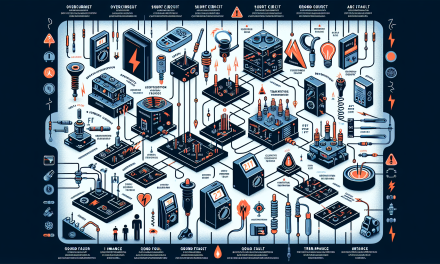Table of Contents
- 1. Understanding Decision Analysis
- 2. Importance of Decision Analysis in Operation and Maintenance
- 3. Key Components of Decision Analysis
- 4. Steps in the Decision Analysis Process
- 5. Tools and Techniques for Decision Analysis
- 6. Challenges in Decision Analysis and Solutions
- 7. Best Practices for Successful Decision Analysis
- 8. Frequently Asked Questions
- 9. Conclusion
1. Understanding Decision Analysis
Decision analysis serves as a structured approach to making choices that can either enhance a company’s operational efficiency or lead to considerable financial setbacks. Essentially, it provides a framework that incorporates both qualitative and quantitative factors, allowing professionals to sift through complexities in various situations effectively. For operation and maintenance professionals, grasping the fundamentals of decision analysis is imperative, as it equips them with the tools to drive better outcomes.
2. Importance of Decision Analysis in Operation and Maintenance
Decision analysis plays an integral role in enhancing the reliability and efficiency of operations in any industrial environment. As operation and maintenance professionals confront diverse challenges daily, having a robust decision analysis framework helps in several ways:
Minimizing Risks
By utilizing decision analysis, professionals can identify potential risks associated with equipment failures or operational downtime. Consequently, addressing these risks at an early stage significantly minimizes their impact.
Cost Management
Effective decision analysis promotes smarter resource allocation and helps avoid unnecessary costs. Instead of reacting to problems as they arise, professionals can proactively create strategies that save money and time in the long run.
Enhancing Communication
Employing a structured decision-making approach fosters improved communication among teams. When everyone understands the decision-making process, collaboration and brainstorming eliminate ambiguities and make operations smoother.
3. Key Components of Decision Analysis
To effectively implement decision analysis, several key components must be understood and integrated. They include:
Objective Definition
First and foremost, professionals must clearly define the objectives of the decision at hand. What are the desired outcomes? Understanding the goal helps direct the analysis.
Alternatives Evaluation
Professionals should explore a range of alternatives. By examining multiple options, teams can evaluate their advantages and disadvantages, leading to better-informed decisions.
Risk Assessment
Analyzing potential risks associated with each alternative aids in predicting unforeseen consequences. A thorough risk assessment promotes informed decisions that mitigate negative outcomes.
Criteria for Decision-Making
Establishing clear criteria for evaluating alternatives remains essential. This helps in quantitatively measuring the best possible choices and makes it easier to compare different options.
4. Steps in the Decision Analysis Process
Now that we understand the importance of decision analysis and its components, let’s look at the steps involved in the decision analysis process:
Step 1: Define the Problem
A clear problem statement sets the stage for effective analysis. Identify and articulate the decision that needs to be made.
Step 2: Gather Information
Collect all relevant information that impacts the decision. This includes past data, market trends, and stakeholder input.
Step 3: Develop Alternatives
Create a list of viable alternatives that address the problem. In doing so, think creatively to ensure various options are available.
Step 4: Analyze Alternatives
Evaluate each alternative against the established criteria. Consider both the qualitative and quantitative aspects of each option.
Step 5: Make the Decision
Based on the analysis, decide on the most rational option. However, remain open to feedback from peers.
Step 6: Implement the Decision
After making a decision, create a plan for its execution. Define responsibilities, timelines, and necessary resources.
Step 7: Monitor Outcomes
Track the decision’s implementation to assess its effectiveness. If the outcome deviates from expectations, reevaluate the analysis.
5. Tools and Techniques for Decision Analysis
There are various tools and techniques that can assist operation and maintenance professionals in their decision analysis efforts:
Decision Trees
Using decision trees helps visualize choices and possible outcomes. They serve as a straightforward way to illustrate complex decisions.
SWOT Analysis
SWOT (Strengths, Weaknesses, Opportunities, Threats) analysis can uncover vital insights into internal and external factors affecting decisions.
Cost-Benefit Analysis
Evaluating the costs versus benefits can clarify the financial implications of each option, contributing to more informed choices.
Simulation Models
Simulation models offer predictive insights by simulating various scenarios based on the available data.
Multi-Criteria Decision Analysis (MCDA)
MCDA allows professionals to evaluate multiple conflicting criteria in decision making and helps identify the best overall alternative.
6. Challenges in Decision Analysis and Solutions
Despite its benefits, decision analysis presents several challenges, which professionals must navigate:
Challenge 1: Limited Information
Sometimes, professionals must make decisions with insufficient information. In such cases, drawing on historical data and expert opinions can often bridge the gap.
Challenge 2: Resistance to Change
Organizations often resist change. Engaging stakeholders early and demonstrating the value of new decisions can help mitigate this resistance.
Challenge 3: Complexity
Complex decisions can overwhelm teams. Breaking down the decision into manageable segments can simplify the process.
7. Best Practices for Successful Decision Analysis
To ensure effective decision analysis, keep the following best practices in mind:
Encourage Collaboration
Fostering a collaborative environment allows for diverse perspectives, enhancing the analysis.
Regularly Review Processes
Continuously reviewing decision-making processes leads to improved methodologies over time.
Attend Relevant Workshops
Participating in workshops can sharpen skills. For example, the Operation & Maintenance Decision Analysis Training conference offers valuable insights for professionals seeking continuous improvement.
8. Frequently Asked Questions
What is decision analysis?
Decision analysis is a systematic approach to making decisions, emphasizing both qualitative and quantitative information.
Why is decision analysis important for operation and maintenance professionals?
It helps professionals make informed decisions, minimize risks, save costs, and improve communication.
What tools can assist in decision analysis?
Tools such as decision trees, SWOT analysis, cost-benefit analysis, simulation models, and multi-criteria decision analysis (MCDA) can be particularly useful.
How can I improve my decision-making skills?
Improving decision-making skills can involve attending relevant training and workshops, reading resources like Mastering the Art of Contracts, or engaging in effective communication workshops.
Are there any challenges in decision analysis?
Yes, challenges include limited information, resistance to change, and the complexity of decisions.
9. Conclusion
In summary, decision analysis remains a critical component for operation and maintenance professionals aiming to enhance their company’s performance. By utilizing effective decision-making strategies, embracing challenges, and continuously seeking improvement through best practices and workshops such as Operation & Maintenance Decision Analysis Training conference, professionals can significantly elevate their decision-making capabilities.
Furthermore, as they navigate through the complexities of their roles, resources like Mastering Advanced Supervisory Skills and Unlocking Financial Success can offer valuable insights to refine their expertise in decision analysis.





